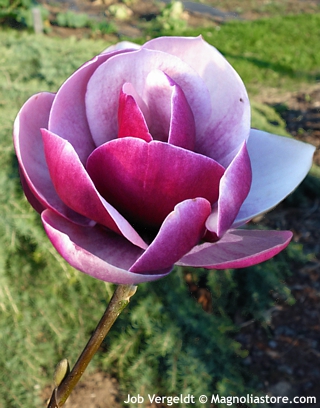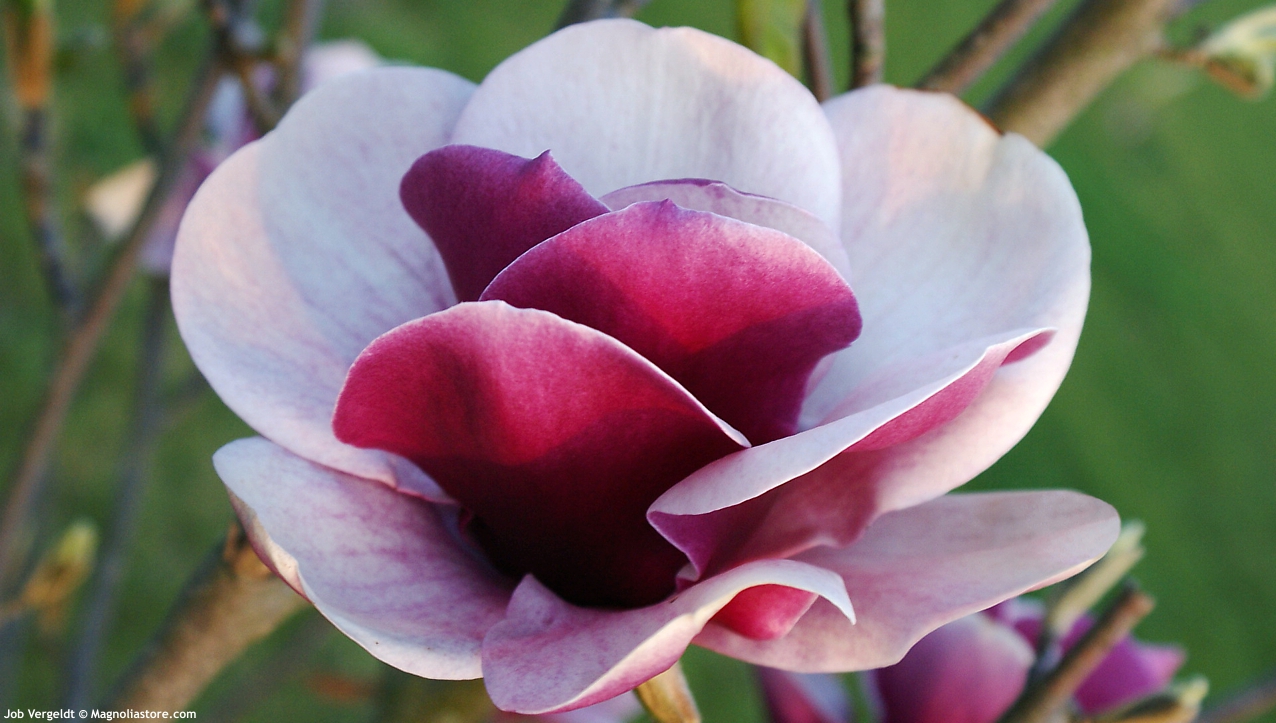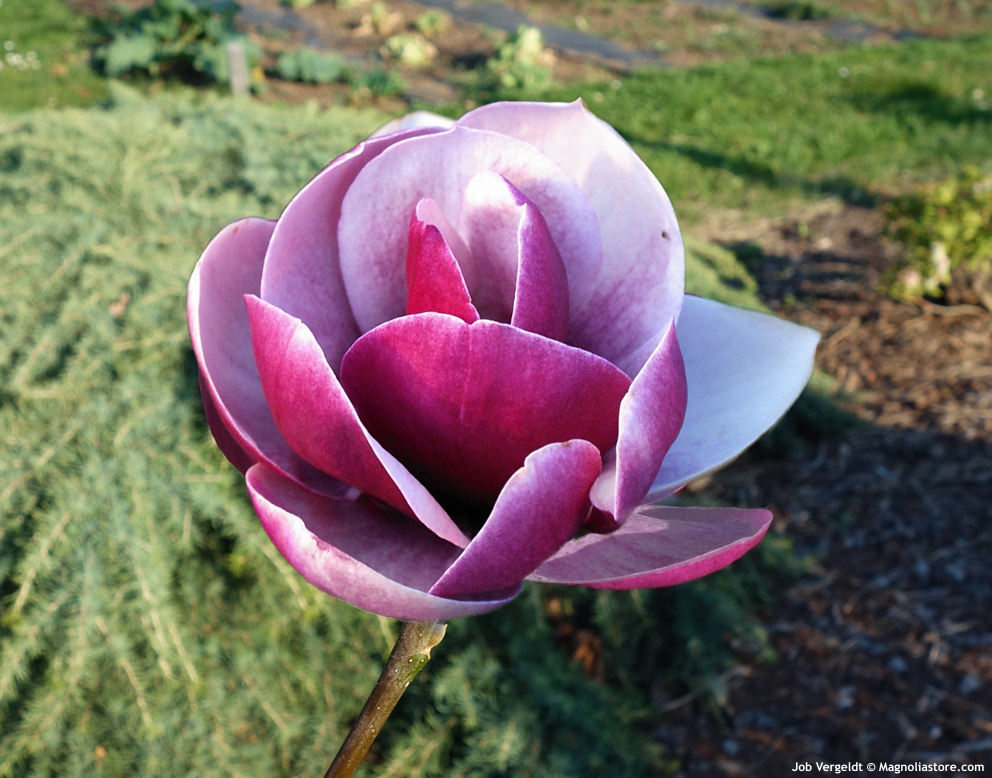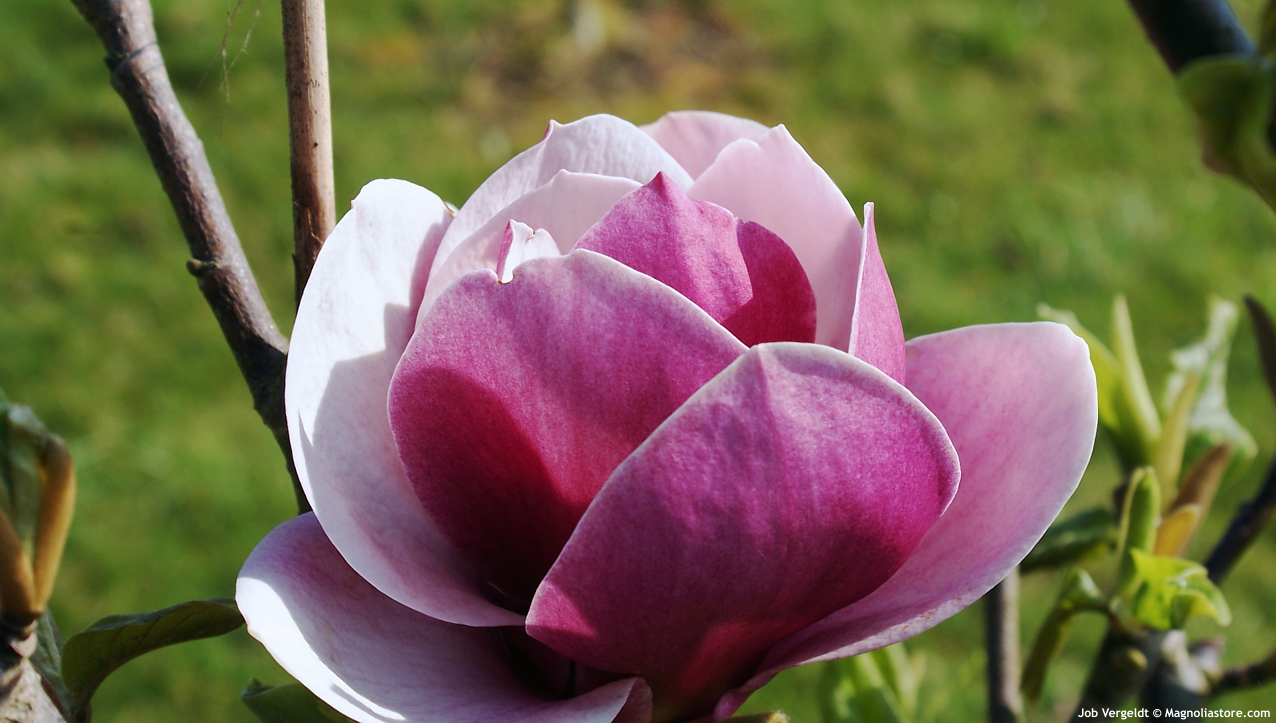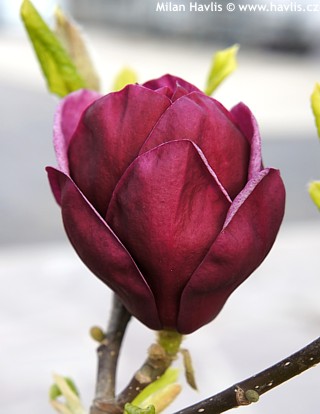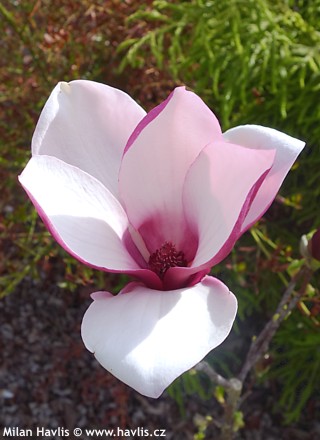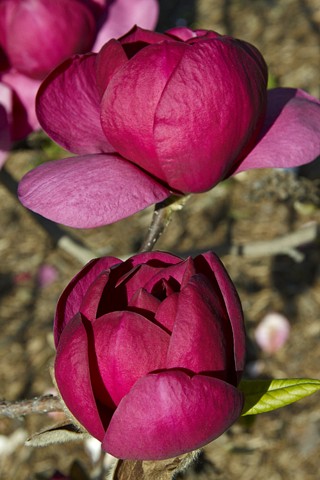Magnolia 'VENUS' magnolia
Venus is a fascinating magnolia variety from Germany. From about mid April produces abundance of 14-16 cm large, fragrant flowers of noble shape. They are peony-shaped as they emerge and open into lotus-like shape in maturity. Their firm petals are deep magenta purple outside and almost white inside with some purple red veins. Individual flowers boast unique longevity of up to 12 days and often re-bloom in midsummer in a lighter shade. Being late to flower they easily escape late spring frosts.
Venus magnolia is a moderate to slow grower, forming strongly upright shrubs or small trees reaching some 4 m in gardens and possibly 6 m in parks and everywhere with no root limits. Leaves are particularly beautiful, too. They are deciduous, large, broadly obovate, velvety matte, medium green, and flushed bronze when young. It was bred by German breeder and magnolia enthusiast Michael Gottschalk and introduced in 2017. It is a cross between m. x soulangeana ‘Pickard’s Ruby’ and m. BLACK TULIP®.
Magnolias are not supposed to be pruned. You can prune old shrubs if ill, or trim them to shape or to reduce size, or make an elementary cut to young plants of unsightly or unhealthy appearance. Do this as soon as possible after flowering to secure setting of flower buds for the following year. Be aware that each magnolia can respond differently to pruning.
Deciduous magnolias are quite easy plants. All they need is light, well-drained, acidic soil with equal moisture throughout the year. Once established they can do with occasional drought but will not look as nice as the ones with regular watering. Just pay attention to how you plant your magnolia. First, find it a spot where it will live forever and ever. It does not like transplanting. And as it makes shallow roots reaching well over its spread, stay away from disturbing the roots by digging or messing about around it. Just cover the soil with bark mulch and do not plant anything else near it after say the second year after planting onwards. You could damage the important top roots that absorb maximum moisture and nutrients from the soil. Also avoid planting magnolia too deep. Thus, you could be digging it a grave. Being too new its hardiness has not been tested under all possible conditions but considering its parentage it is expected to take at least -27 °C (USDA zone 5b).
Last update 18-12-2020

































